The Panasonic Lumix GH5 was released more than five years ago (March 2017). I remember having a blast with it during my two week review. At the time, the camera packed an impressive number of functionalities and was one of the most complete products on the market. It offered excellent image quality for stills and superb quality for video, while also being the first mirrorless to have 10-bit 4:2:2 internal recording and 4K 50/60p. Its only limitation was the autofocus, which offered limited performance in certain situations.
Its successor, the GH5 II, is the first in the GH series to use the mark II nomenclature. Traditionally, every new GH model brought significant innovations and improvements. This time, the upgrades are more subtle than we were expecting, but there is a reason for this: Panasonic has also announced the development of the GH6, which will become the true new flagship at the end of this year (more on this further down).
For now, let’s start by seeing how the GH5 and the GH5 mark II compare, beginning with what they have in common:
- 20.3MP sensor with no AA filter (the GH5 II chip is an updated version with Anti-Reflective coating)
- ISO range: 200 to 25600 (12800 for video), plus extended low ISO 100
- Maximum of 12fps in burst mode with mechanical or electronic shutter (the GH5 II has better buffer capabilities: 108 vs 60 images with RAW, 999 vs 600 with JPG)
- 6K and 4K Photo modes
- 3.5mm mic input, headphone output, USB C and full sized HDMI
- same dimensions and weight
- magnesium alloy frame, weather sealing
- 2 SD card slots with UHS-II
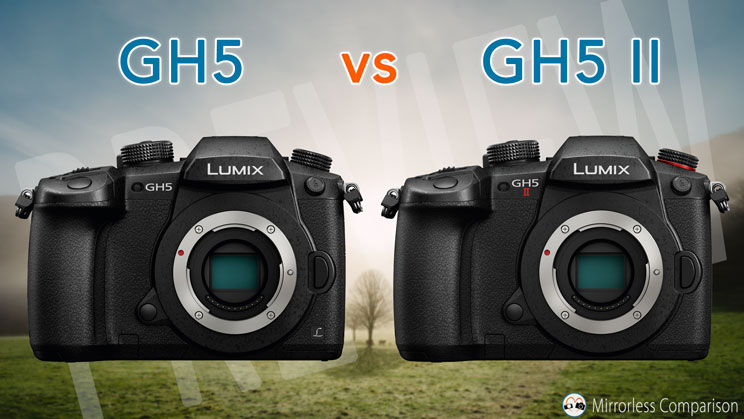
Ethics statement: The following is based on official information about the GH5 II and our personal experience about the GH5. We were not asked to write anything about these products, nor were we provided with any sort of compensation. Within the article, there are affiliate links. If you buy something after clicking the link, we will receive a small commission. To know more about our ethics, you can visit our full disclosure page. Thank you!
1. Video
The GH series has always been video-centric, so let’s talk about the movie capabilities first.
Most of the specifications remain unchanged from the previous camera. This means they can both:
- record 4K and Cinema 4K up to 60fps with no sensor crop
- record 4K and 6K anamorphic video using the entire 4:3 sensor surface
- record without limit to the duration
- record 1080p up to 180fps in VFR mode (focus has to be set before recording)
- display zebra patterns, waveform, vectorscope etc.

The main difference concerns 10-bit recording. They can both record 10-bit 4:2:2 up to 30p (H.264 codec, All-Intra, 400Mbps) but when it comes to 4K 50/60p:
- the GH5 stops at 8-bit 4:2:0 (150Mbps)
- the GH5 II can do 10-bit 4:2:0 with the H.265 codec (200Mbps)
Additionally, the GH5 II can record 4K 60p 4:2:0 10-bit while outputting 4K 60p 4:2:2 10-bit over the HDMI port, meaning you can record such quality internally and externally simultaneously. On the GH5, this is possibly only if you select 8-bit for the internal recording.
Another difference is that the GH5 mark II includes the V-Log L profile by default, whereas for the original GH5, you need to purchase the upgrade key to unlock it ($100). HLG is available on both.
The GH5 II inherits a few extra things, which Panasonic previously developed for other cameras like the full frame S1H. For example, it can display a red frame around the edges of the LCD screen to give a better visual indication that the camera is recording, while the Frame Marker function allows you to check the composition of various aspect ratios (16:9, 4:3, 1:1, 9:16 etc.).

2. Autofocus
Both cameras use Panasonic’s contrast detection system (DfD, or Depth from Defocus) with a maximum of 225 areas.
The version on the GH5 II is more advanced and includes deep learning technology. The latter is used to track the eyes, face or body of your subject. The camera can also recognise and track various animals. The overall performance is said to be faster and more accurate.
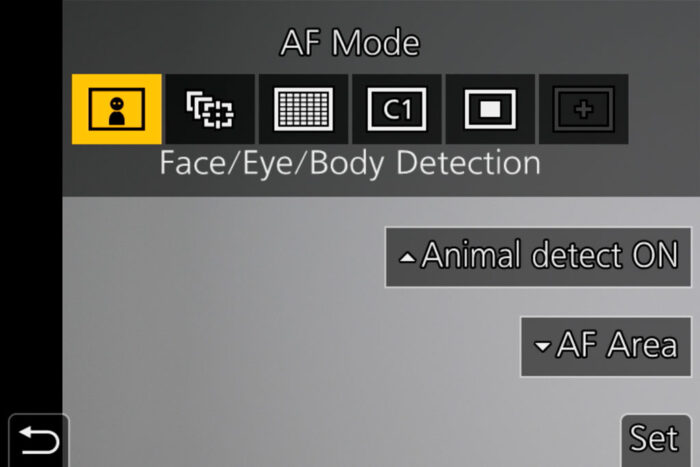
The GH5 has face and eye detection, but lacks advanced tracking modes such as human bodies or animals.
The minimum sensitivity in low light remains the same for both at -4Ev.
3. Linear / Non Linear setting for the focus ring
Another function inherited from the S series is the Focus Ring Control setting. It allows you to control the behaviour of the focus ring on select Lumix lenses.
With Non-Linear, the focus changes not only according to the rotation angle of the focus ring, but also according to the speed at which you rotate the ring. Move it very slowly and it will take several rotations to change focus from one point to the other, move it very quickly and you can go from minimum to infinity with just half a rotation.
With Linear, the focus change remains constant no matter how slow or fast you rotate it. This solution is preferred for video work because it is easier to repeat the same movement and achieve the same focus change.
There is also the option to select the angle at which to perform the rotation.
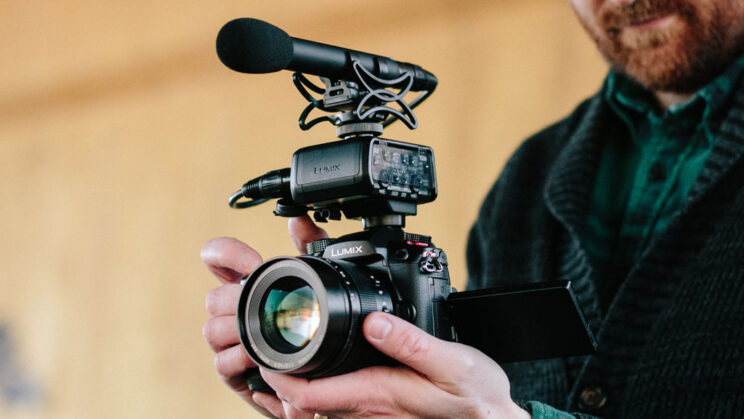
The compatible lenses are:
- 8-18mm F2.8-4
- 10-25mm F1.7
- 12-35mm F2.8 II
- 12-60mm F2.8-4
- 12-60mm F3.5-5.6
- 25mm F1.4 II
- 35-100mm F2.8 II
- 45-200mm F4-5.6 II
- 50-200mm F2.8-4
- 200mm F2.8
- 100-300mm F4.5-5.6 II
- 100-400mm F4-6.3
Note that these lenses will need a firmware update to work properly with this function (available in early June 2021).
4. Image stabilisation
Both cameras feature 5-axis in-body image stabilisation but the rating on the GH5 II is higher: 6.5 stops of compensation versus 5 stops on the GH5. Note that the rating is for Dual IS2, meaning sensor and optical stabilisation (on select lenses) working together.
The GH5 II also inherits the latest shake correction algorithm from the S1H to make the footage smoother and more stable during video recording.
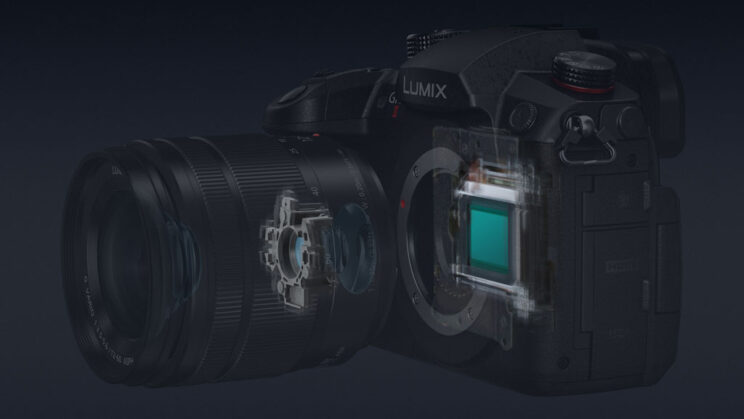
5. Photo styles
The GH5 mark II has five additional colour profiles (or Photo Styles) in comparison to the GH5:
- L. Classic Neo
- L. Monochrome S
- Cine-Like D2
- Cine-Like V2
- Flat
The last three are specifically designed for video.
6. Wireless live streaming
The most interesting addition to the GH5 II is a set of features to make live streaming easier and simplify the process without the need of a computer.
With the Lumix Sync mobile app, you can connect to a smartphone or tablet and live stream to platforms such as YouTube, Facebook or and any other service (IP streaming via RTMP / RTMPS is supported). The maximum output for streaming is 1080p at 60fps.
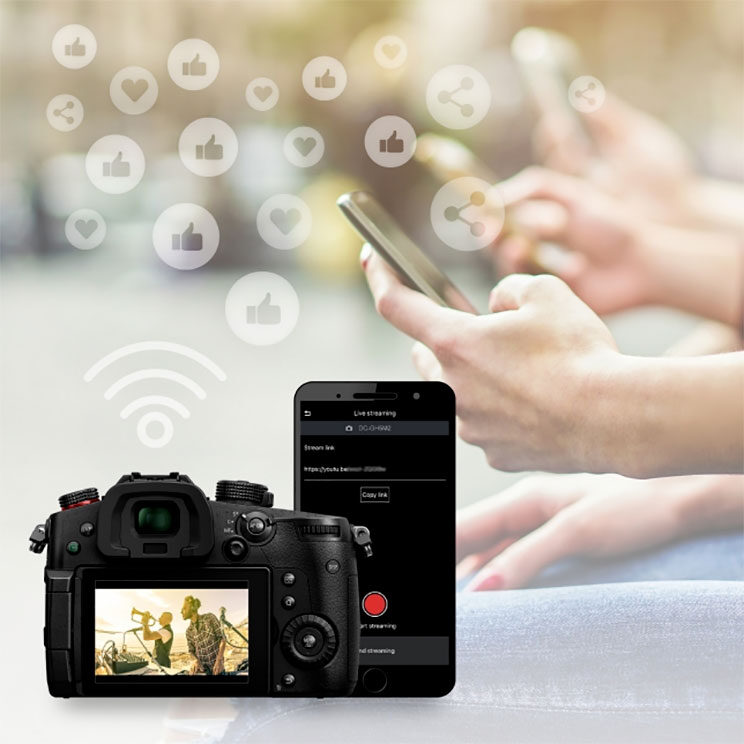
You will also be able to connect to a Wifi-Router, while a future firmware update will allow you to use the 4G or 5G connection of a smartphone by connecting the camera with the USB cable, or used a RTP/RTSP wired IP connection with a computer.
Wired live streaming is also possible by connecting the camera to the LUMIX Webcam Software.
7. Battery and USB Power
The GH5 II comes with a more powerful battery, the DMW-BLK22, with 2200mAh (as opposed to the DMW-BLF19 of the GH5 that has 1860mAh). Curiously, the CIPA rating remains the same (about 400 frames per charge). Note that the BLK22 can be used with the GH5 too, but it must be purchased separately.
What is more interesting is that, unlike the GH5, the GH5 II can be charged or powered via USB, which allows you to extend the usage beyond the battery.
8. Design and functionality
Very little has changed. The dimensions and weight are basically the same, as well as the button layout. The only notable differences on the GH5 II are the all-red video recording button and the presence of four custom modes instead of three on the main dial. Also, the small L marking (for Lumix) has disappeared from the bottom right corner at the front, and there is a red ring under the drive dial.
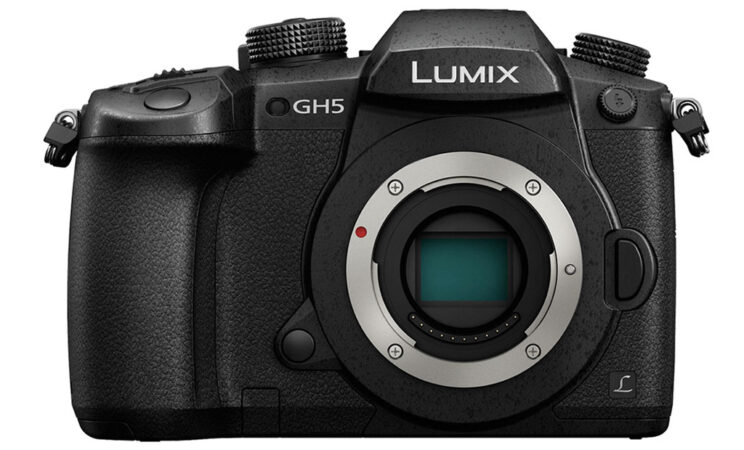
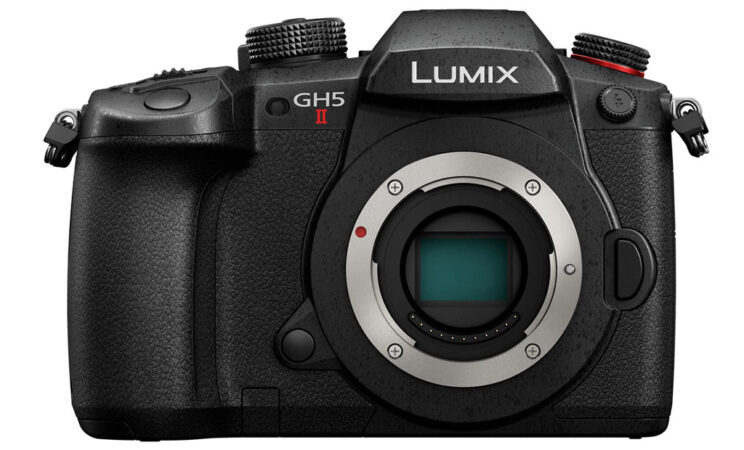

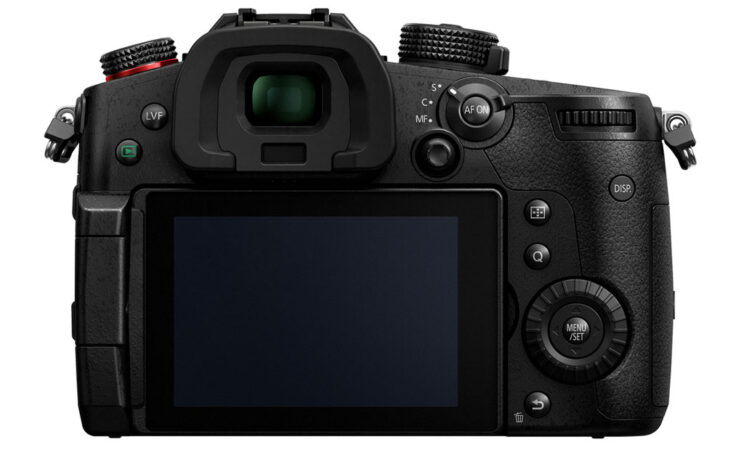
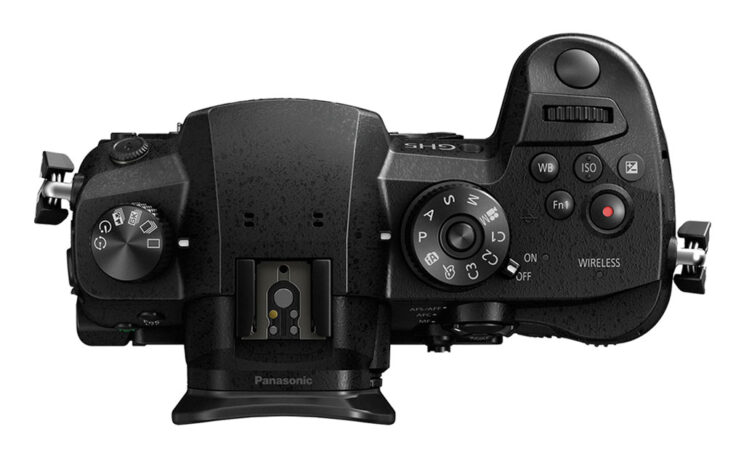

The electronic viewfinder has the same characteristics (3.68M dots, 0.76x equivalent magnification, 21mm eyepoint) but the refresh rate is higher on the GH5 II (120fps vs 60fps).
As for the LCD screen, it is a 3.2-in multi-angle screen with touch sensitivity, but the one on the new camera has a bit more resolution (1.84M vs 1.62M dots), as well as more luminosity and better colour reproduction.
9. Live view composite
A future firmware update will add the Live View Composite function, which allows you to blend multiple exposures to create various long exposures effects, from star trails to light paintings. It’s the same concept as the famous Olympus Live View Composite mode, and was first introduced on a Lumix camera with the G90.
10. Price
The original GH5 can be found for $1300 / £1200 / €1300 (body only). We’ll have to see how long it stays on the market now that the mark II model is out.
The new GH5 II starts at $1700 or £1500.
Note: prices are as of May 2021.
What about the Panasonic GH6?
As mentioned at the beginning of the article, the GH5 II doesn’t represent a major upgrade over the GH5 because there is another camera, the GH6, that is currently being developed and is set to be released at the end of 2021.
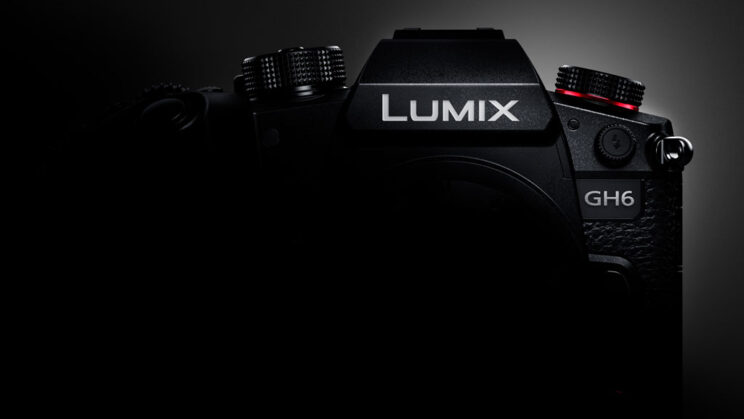
The GH6 will feature a brand new sensor and will be capable of recording 5.7K up to 60p, as well as 4K 60p with 10-bit 4:2:2, and 4K 10-bit up to 120p.
By the end of the year, there will be three GH cameras: GH5 II, GH5S and GH6. One may wonder why they are releasing the GH5 II at all, instead of just waiting for the GH6. My guess is to diversify the line-up. The GH5 II is the perfect all-rounder with live stream features, the GH5S has better high ISO performance and no IBIS (which many filmmakers prefer), and the GH6 will be top of the class with state of the art specs. It will also allow Panasonic to diversify the prices.
The GH5 II is less expensive than what I thought it would be (the original GH5 cost $2000 when it was released) and consequentially, the GH6 could be the most expensive out of the three, sitting on top of the GH5S (currently available for $1800, $2500 when announced). According to Gordon Laing, the price should be around $2500, so no more expensive than the GH5S launch price.
Conclusion
The GH5 II may not be the big upgrade we’ve become accustomed to with the flagship GH series, but there are various improvements here and there that make it more complete than its predecessor, which was already quite spectacular when it comes to the range of specifications and features.
Personally, I’m curious to see how much the autofocus has improved. I don’t expect miracles, but hopefully they have fixed some of the issues many GH5 owners and reviewers experienced.
I also like the wireless streaming implementation. It makes sense given all that has happened in the last year, and with more and more people starting YouTube channels and wanting to stream from various location. The GH5 II sounds a great solution to do this with minimal but professional equipment.
Check price of the Panasonic GH5 on
Amazon | Amazon UK | B&H Photo | eBay
Check price of the Panasonic GH5 II on
B&H Photo
